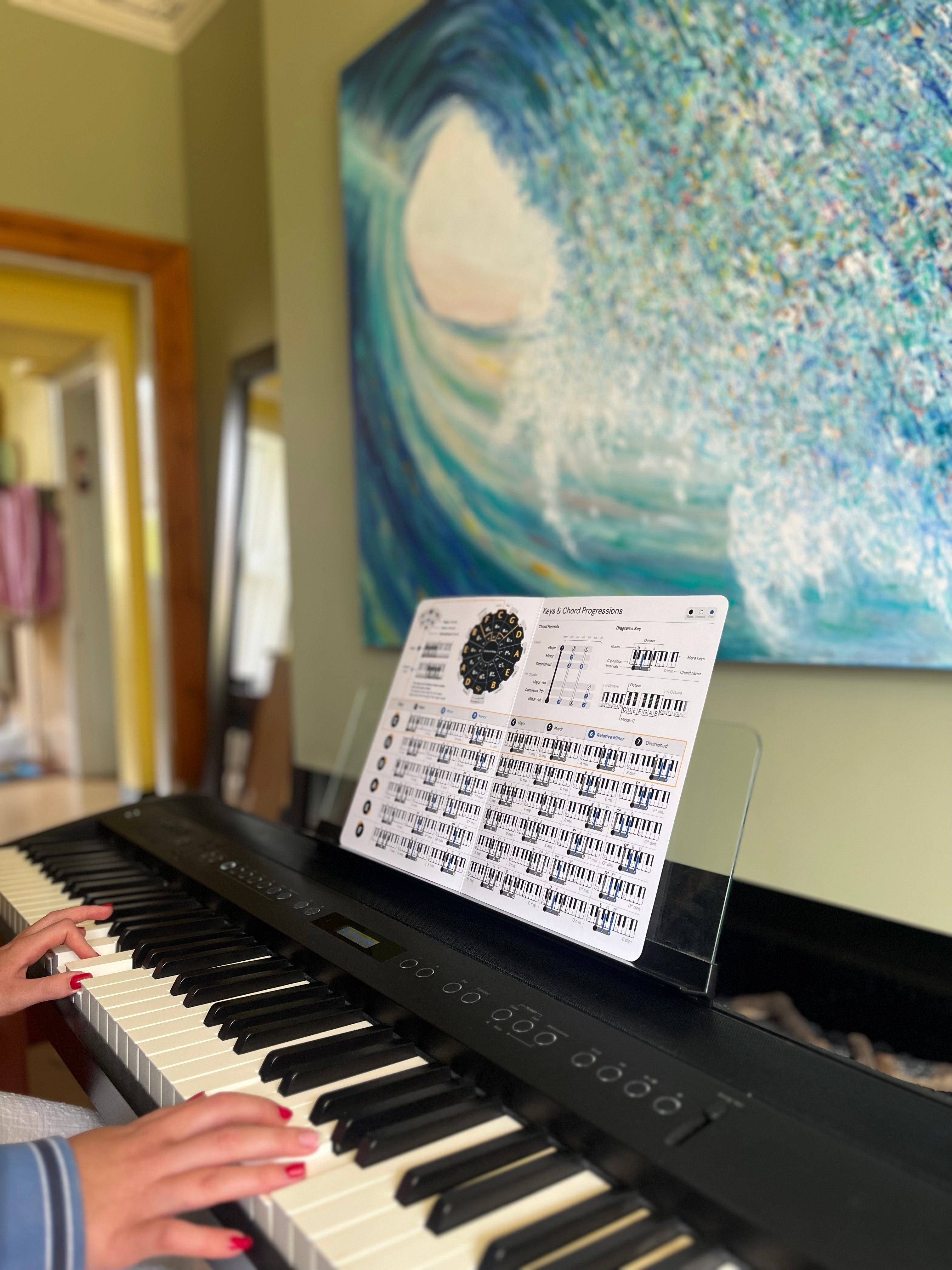One of my biggest musical ‘Aha!’ moments was realising there is no musical difference between the black and white keys on the piano. Let me explain:
The black keys on keyboards are physically shorter and stepped back from the front edge. They are more awkward to play and seem less important. There are several reasons for why they have evolved to be physically the way they are; however, it is musically helpful to think of the black keys as being identical to the white keys.
Trivia side note: In the 18th Century the colour of the white and black keys was reversed. The white keys were all black…
In the diagram below the black keys are extended to the front of the keyboard. When represented like this we can more easily understand that an octave is split into 12 equal parts. There is no distinction between adjacent notes. Every note, white or black is an identical distance from the next, each is a semitone/half-step away from its neighbours. A semitone or half-step is our first named interval, the smallest standard interval in music (except if you are Jacob Collier explaining microtones).

What is a Musical Scale?
A scale is a consecutive series of notes from one note to its octave. This scale guides chord progressions and harmony. They provide guidelines for which notes will sound "right" or "wrong" in a particular musical context. An octave has 12 equally spaced notes, while a scale typically reduces the number of notes used. In western music a diatonic scale is frequently used, this uses only seven notes from the twelve possible in an octave.
The Major Scale
One of the fundamental Western scales is the major scale. The sound of this is one we all know, some of us from watching The Sound of Music way too many times. The Do-Re-Mi song is indelibly burned into millions of synapses, but perfectly captures the major scale. Do-Re-Mi, called solfège, is an example of a mnemonic used for teaching aural skills. Solfege assigns syllables to the notes of the scale. Here at Noisy Clan we prefer to assign numbers to the notes of the scale as these are much more easily remembered. Scale numbering system has been around for centuries but Nashville gets credit for this, in part because it was designed for musicians who lacked formal music training

Nashville Numbering
The C Major Scale degrees, in Nashville numbering, have been added to the bottom of the keyboard diagram above. The scale and numbering starts from the Root on the C. The Root is 1, the next note 2 follows sequentially and continues up to 7, which is the last unique note. The next note is C, an octave higher, and we are back to the root again. Here at Noisy we encourage people to use numbers as it makes communication easier and music more understandable.
This blog is just part one of a two part series. So make sure to watch out for part two to drop soon!





